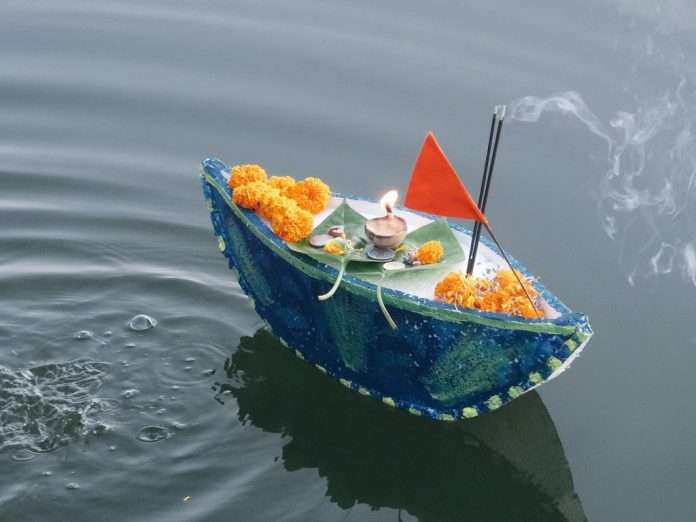A reminder of Maritime Trade of Kalinga
Kartika Purnima is a Hindu Sikh and Jain Cultural Festival Celebrated on the full moon day of Kartika. It is also called Deva. Deepavali, the festival of lights of the Gods.
Kartika Purnima is a day of Significance for Odiyas who are reminded of their ancient maritime trade in the Ocean. On this day early in the morning. Odiya people observe the ritual of Boita Bandana by floating tiny paper banana boats in water bodies to remind past glory of maritime trade of Kalinga. It reminds the glory of the sadhabas (Sea traders) who used to go to distant lands like Java Sumatra and other south east Asian islands for trade. Women in the family bid then adieu on this day with a celebration on the banks of the rivers and Bay of Bengal. Aa ka ma boi, Pana gua thoi. Pana gua tora masaka dharama mora-is a prayer to keep the mariners safe during their sea vayage.
The maritime trade in Orissa had flourished during the ancient time, having naval superiority as mentioned in Kautilya’s Arthasastra. The trade Supremacy of Kalinga had made it a superior economic power that was not acceptable to Asoka, the mauryan emperor. This sea trade flourished to 13th century AD. Like the Phoenicians, Odiyas were expert sailors, braving the high seas and perilous journey’s. One main reason of sea trade was that timber was plentily available in the forests of Orissa. Kalinga had a coastline of about 500 kms. There were many ports – Nanigaina (Puri) Katikardama (Cuttack), Kannagara (Konark), Kosamba (Balasore) as described by Ptolemy in 2nd century AD.
Geographical factors had a key role in deciding the time and route of the sea trade. The sadhabas used to start their journeys with the loaded ships (Boita) in the month of November in the direction of retreating monsoon. Due to Kalinga war with Asoka maritime trade suffered a set-back. But again during the reign of kharavela the sea trade flourished by the patronage of the king. Hathi gumpha inscriptions and madala Panji mention the sea trade of Kalinga. Kalinga had maritime trade links with South Asian countries like Java Bali, sumatra, Bornea, cambodia, Indonesia, Malaysia, Srilanka, Myanmar, Maldives etc. Trade links between Kalinga and East Africa countries and certion Arab countries were also present. The trade was not merely a trade but a cultural assimilation. Kalinga traders used to trade long pepper, silk, cinnamon, cardamom, camphor, gold, jewellery etc.
The maritime trade of Kalinga had great influence on the culture of Sri Lanka, Thailand etc Recent discoveries of artefacts potteries, coins and terracota figurines at sisupalgarh is establish the trading relation of Kalinga with Roman empire too.
The maritime trade declined with the advent of Arab traders followed by Portuguese Dutch, French and English. The same river Mahanadi, Baitarani, Rusikulya are flowing. But there are no more boats (Boitas) and trade. Maritime trade of Kalinga met with its nemesis. But glory is there when the eldest sadhaba at the time of his death, advised his sons not to leave the profession of the family of ancestors-that is the maritime trade.
(The views expressed are the writer’s own.)

Radhakanta Seth is a former Income tax officer in Sambalpur. He is a freelance writer and his articles have been published in some Oriya dailies like Sambad, Samaj, Dharitri, and English dailies like The Telegraph and in a sociological journal ‘Folklore’ published in Kolkata.
He can be reached at [email protected]

